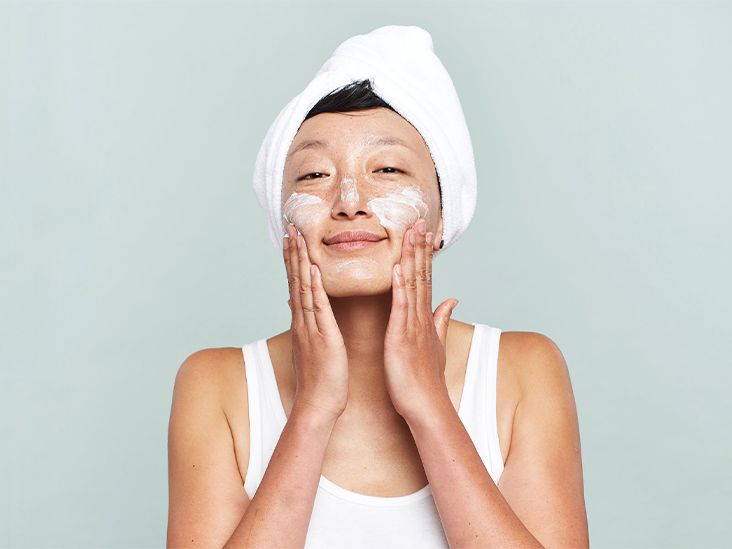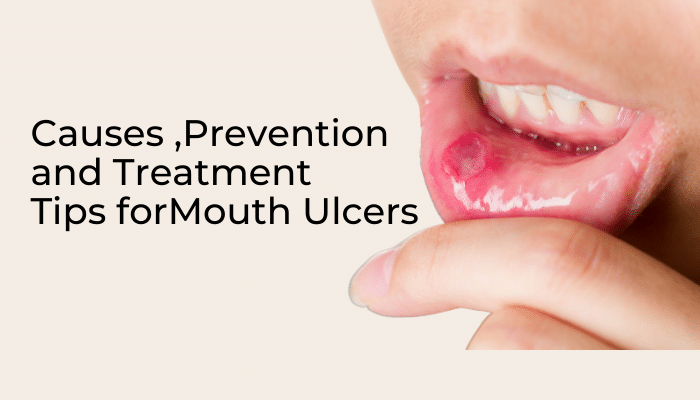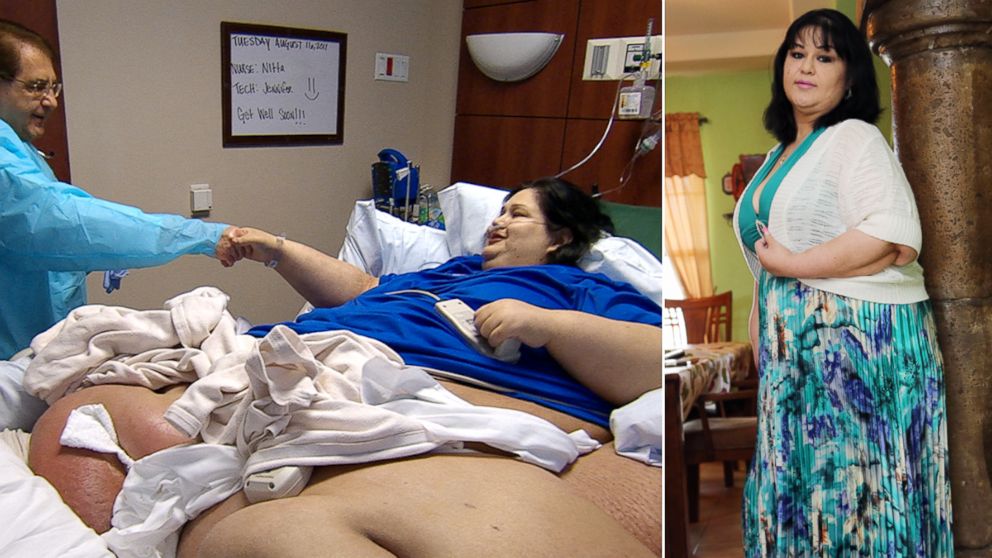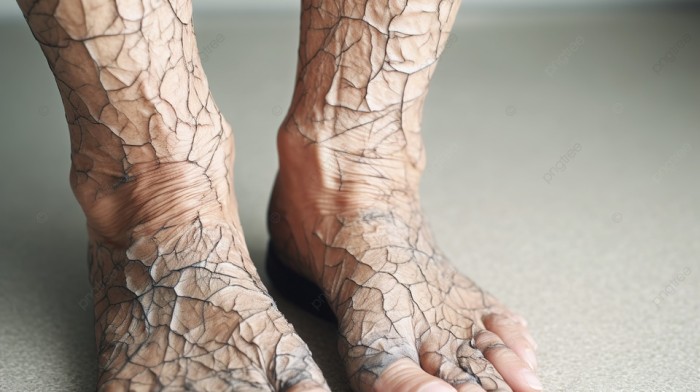
How to Cope With Dry Skin and Cracks on Your Feet
Cracked Heels and Dry Skin on Feet: Treatments and More

Dry, cracked skin on your feet is a common problem that typically develops over time. It occurs in stages, starting with a lack of moisture in the skin.
Then the skin on the soles of your feet develops calluses—dry, thickened areas of dead skin caused by repeated friction and/or pressure. If left untreated, the skin continues to dry out, leading to cracks or fissures on the heels, soles, or sides of your feet.
Fortunately, dry feet and cracked heels can often be prevented with regular pedicures. You can treat calluses at home with foot soaks, a pumice stone, and moisturizer. If self-care strategies aren’t enough, see a podiatrist for more advanced treatments.
This article discusses dry feet and cracked heels. It explains common causes of dry, cracked feet, how to prevent and treat them at home, and when to see a healthcare provider.
:max_bytes(150000):strip_icc():format(webp)/coping-with-dry-cracked-feet-1337642-v2-31bdcd9cec7b452b84ab626bc566c433.png)
What Causes Dry, Cracked Feet?
Dry feet occur when there is a lack of moisture in the skin.
Dry skin, also known as xerosis, can be due to environmental factors or an underlying health condition. Dry skin can also cause other symptoms such as itchiness, rash, and pain.
Dry skin can also set the stage for fissures (cracks in the skin), particularly on the heel. This happens when repeated friction or pressure causes the skin on the bottoms of your feet to thicken into calluses.
In addition, the protective fat pads in the soles of your feet become thinner as you age. As you lose this cushioning, the skin on the already dry and hardened callouses becomes stressed.
As you walk and put more pressure on the area, the fat pads in the heel and ball expand, causing the skin to split. Over time, these small cracks become deeper, more painful, and may begin to bleed.

Risk Factors for Dry, Cracked Feet
While anyone can develop dry feet and cracked heels, common risk factors include:
- Aging
- Being on your feet for long periods of time
- Going barefoot
- Obesity
- Smoking cigarettes
- Taking long, hot showers
- Wearing ill-fitting shoes, hard or unsupportive footwear, or shoes without socks
Structural abnormalities of the foot can contribute to the development of calluses. These include:
- Bone spurs: Bony projections along the edges of bones
- Bunions: Bony bumps at the base of the big toe
- Hammertoes: An abnormal bend or buckling at the middle joint of a toe
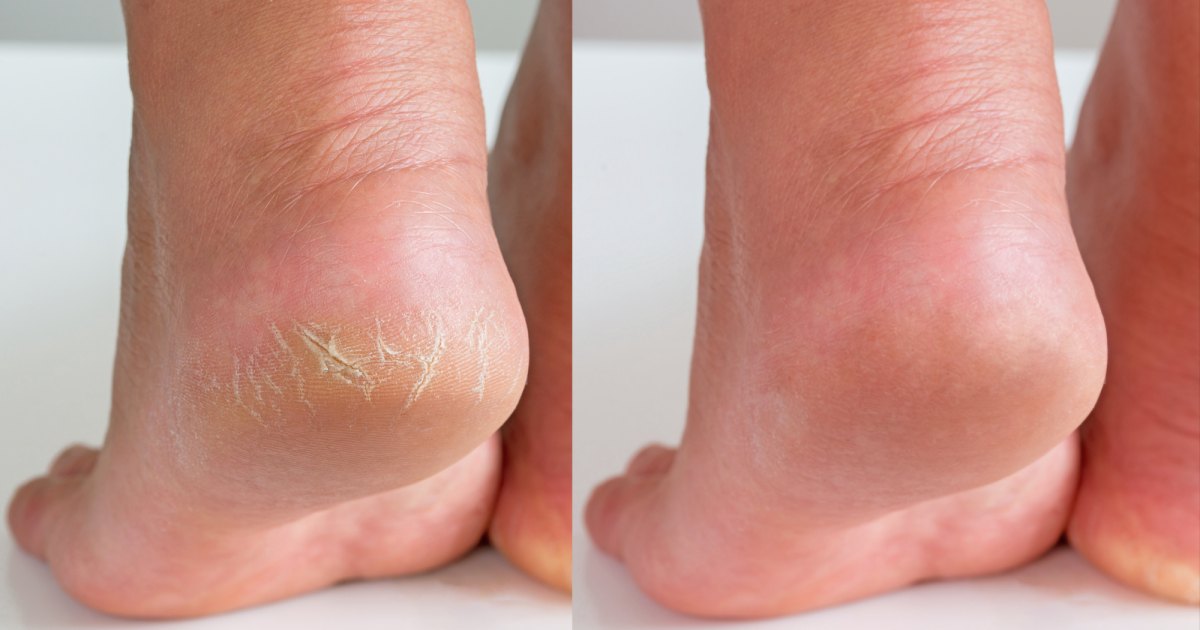
Environmental Factors
Things your body comes into contact with may sap the moisture from your skin and contribute to your feet’s dryness. Environmental factors may include:
- Heat and humidity: The inside of your shoe can get very hot—sometimes well over 120 F. This heat and humidity can cause your skin to lose moisture and thicken.1
- Skin cleansers: Certain soaps can strip protective oils from the skin. They can also leave irritating residues that contribute to dry skin.
- Cold weather: Dry skin often worsens in the winter months. That’s because cooler outdoor air is less humid. In addition, indoor heating further dries out the indoor air.
Skin Conditions
Certain skin conditions can result in dry, thickened skin on the feet. These conditions include:
- Athlete’s foot (tinea pedis)
- Psoriasis
- Skin rashes caused by an allergy or irritants (contact dermatitis)
- Leg vein problems (called venous stasis)
In children, atopic dermatitis (eczema) is a common cause of dry, scaly skin on the feet.2
Why Are the Bottoms of My Feet Peeling?
The bottoms of your feet could be peeling due to sunburn, eczema, dry weather, athlete’s foot, psoriasis, genetics, dehydration, or even reactive arthritis.
The best way to remedy the peeling is by treating the underlying reason for it. If athlete’s foot or eczema are the cause of foot peeling, a podiatrist can offer specialized treatment such as medicated creams for dry feet.

Medical Conditions
Certain health conditions and nutritional deficiencies can lead to feet that are dry and cracked. These include:3
- Diabetes
- Hypothyroidism
- Malnutrition
- Vitamin A deficiency
- Essential fatty acid deficiency
Conditions that cause poor absorption of nutrients from your diet, such as Crohn’s disease or celiac disease, may lead to vitamin and essential fatty acid deficiencies.
Aging
Due to changes in hormones and metabolism, as you get older, your body replaces skin cells less often. These changes result in your skin’s outermost layer growing thicker.4
After menopause, some women develop acquired keratoderma, a skin disorder that can lead to cracked skin on the feet and other parts of the body.
In addition, as you age, the protective fat pad on the sole gets thinner. As you lose this cushioning in the heel and ball of the foot, your skin becomes more stressed, leading to cracked, callused skin.
How to Prevent Dry, Cracked Feet
Caring for your feet properly can help prevent dry, cracked skin on your feet. Wear supportive, properly fitting shoes with socks and avoid going barefoot.
You also can prevent dry feet by avoiding hot baths or showers and only using gentle soap on your feet. Moisturizing your feet daily, getting pedicures, or using a pumice stone to gently remove calluses at home can help.
If you are overweight, losing weight can relieve pressure on your heels to prevent or reduce cracking.
Moisturize Your Feet
Apply foot cream to your feet twice a day, including after bathing and before bed. Moisturizers provide a seal over your skin to keep water from escaping and drying out your skin.
While any lotion will do, some ingredients work better for tackling callused feet. Look for products that contain the following:
- Alpha-hydroxy acid (AHA): AHAs like glycolic acid and lactic acid helps slough off dead skin cells and help the epidermis (the skin’s outermost layer) retain moisture. 5
- Lanolin: Lanolin acts as an effective moisture barrier. You can buy lanolin over the counter (OTC) at any pharmacy. It is usually labeled as a product for breastfeeding parents, although you can use it for any form of dry, chapped skin.
- Urea cream: Urea is a natural antibacterial and anti-inflammatory ingredient and is very hydrating.
If you are prone to allergies or skin sensitivities, make sure to use hypoallergenic products formulated for sensitive skin.
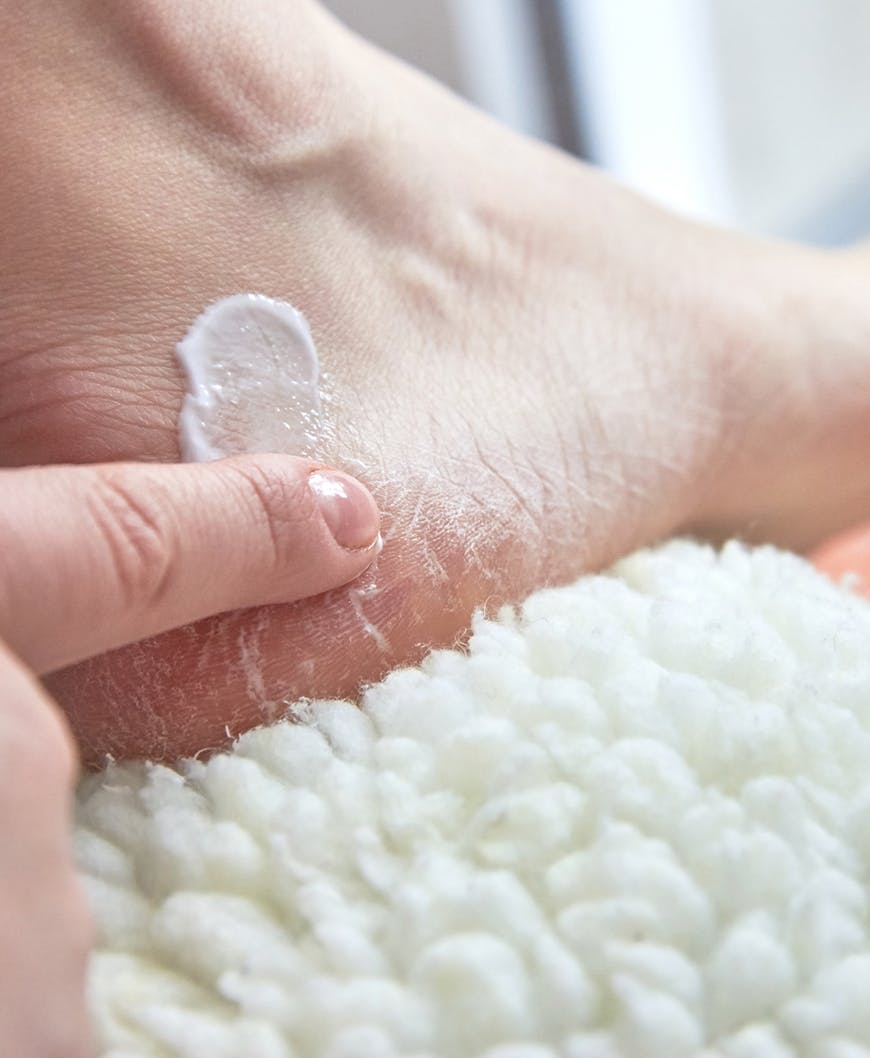
Get a Pedicure
Getting regular professional or at-home pedicures can help you stay on top of calluses before they become problematic.
Pedicures are very effective at keeping calluses from building up. It’s safe to remove some of the dead, callused skin—as long as you do so gently.
To give yourself an at-home pedicure:
- Soak your feet in warm water for about 20 minutes.
- For dry skin on the tops of the feet, ankles, and legs, use a loofah sponge or exfoliating foot scrub to remove dead skin cells.
- Next, use a foot file or pumice stone to slough off dead skin on rough areas on the soles of your feet. Callused skin is tougher and less sensitive than other skin. To prevent overdoing it, stop when you start to feel it.
- Finish off by applying moisturizer to your feet.
At-Home Treatments
Dry, cracked feet can often be treated at home. If the prevention strategies aren’t helping, you may need more advanced treatment to get rid of thick, dead skin.
Foot Peels
A foot peel involves wearing a pair of plastic socks containing exfoliating chemicals for one hour. The chemicals soak into the feet and allow dead skin to peel away over the course of multiple days.
Some people may have a sensitivity to the exfoliating chemicals, so be sure to read the product ingredient list beforehand. Foot peels are available online and at many drug stores.
Petroleum Jelly
Petroleum jelly can help to heal dry, cracked feet. Apply a generous amount of petroleum jelly to your feet, then cover with cotton sock. Leave on for at least an hour or overnight.
Continue this routine nightly. After about a week, the calluses should start to soften and be easier to remove with a pumice stone.
Seal Skin Cracks
You may be able to relieve painful skin cracks by sealing them using a liquid bandage. A liquid bandage is a type of topical skin treatment that can be applied to the area to seal the cracks and prevent infection.6
Your heels should be clean and dry prior to applying the liquid bandage. First, wash your feet with cold water and soap and dry them completely using a clean towel.
To create a seal, use your fingers to close the cracked skin and hold it there. Then apply the liquid bandage over the top and sides of each crack and hold for about a minute. Allow the adhesive to dry completely.
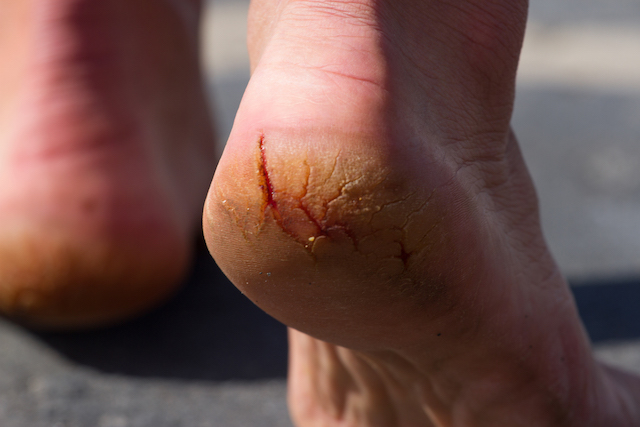
When to See a Healthcare Provider
If at-home treatments do not help heal dry and cracked feet after a few weeks, it may be time to see a healthcare provider. The type of doctor you should see will depend on your symptoms.
Podiatrist
Cracked and callused skin on your feet should be evaluated by a podiatrist, a doctor who specializes in feet. Foot symptoms that warrant a visit to a podiatrist include:
- Bleeding cracks on your heels or soles
- Calluses at the base of the big toe or the back or sides of your feet
- Deep cracks or fissures
- Painful cracks or calluses
- Persistent cracks that do not respond to self-care strategies
Dermatologist
A dermatologist, a doctor who specializes in skin conditions, also treats some skin conditions that involve the feet. Symptoms that indicate a dermatologist may be needed for dry feet include:
- Dry, itchy feet that do not improve with moisturizer
- Hives
- Peeling skin on your feet or between your toes
- Rash
- Symptoms that occur both on your feet and skin on other areas of your body
Primary Care Provider
Dry, cracked skin can be a sign of a more significant health issue, such as diabetes or neuropathy. If you are unable to treat cracked heels at home and suspect an underlying health condition, see your primary healthcare provider.
When to Seek Urgent Treatment
Foot cracks can develop into an infection. If you notice any of the following signs of infection, see your healthcare provider or urgent care right away:
- Pus coming from cracks in the skin
- Redness or red streaks spreading from the cracks
- Swelling
- Whole-body signs of infection, such as fever with or without chills
People with diabetes, neuropathy, or poor circulation are at greater risk for developing serious infections in their feet and should seek prompt treatment for any foot sores, cuts, or cracked skin.
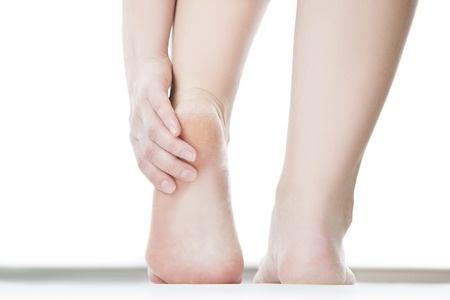
Specialized Treatments
Treatment for your dry feet and cracked heels will depend on the cause and the type of healthcare provider you see.
Podiatrists treat calluses and cracked feet in the following ways:
- Debridement or cutting away the hard and thick layer of skin
- Dressings and bandages to reduce movement of the skin
- Topical prescription medications, including urea or salicylic acid to soften calluses
- Special insoles (orthotics) that provide better foot support
- Tissue glue, similar to liquid bandage, holds the edges of the cracks together so they can heal
A dermatologist may prescribe the following types of topical medications:
- Anti-fungal creams for fungal infections, like athletes’ foot
- Moisturizing cream that contains 10% to 25% urea, alpha hydroxy acid, or salicylic acid
- Steroid creams for dermatitis, eczema, psoriasis, or other inflammatory rash
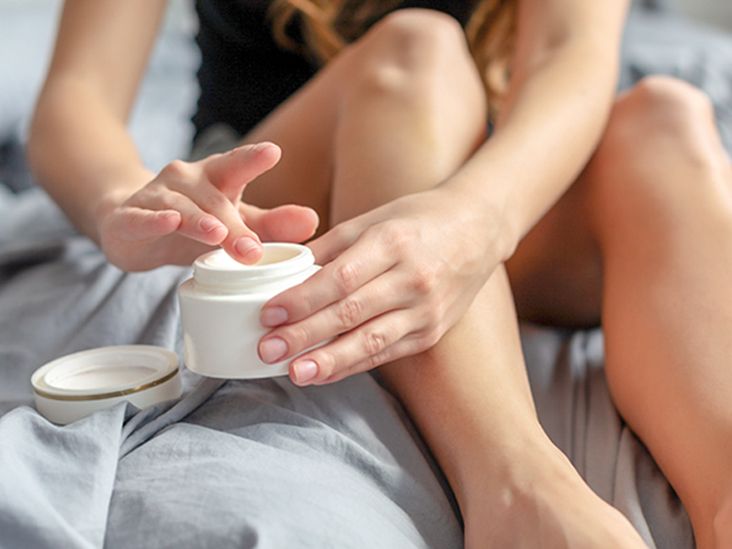
Summary
Dry feet can be caused by environmental factors, aging, or an underlying health condition. When the skin on your feet is dry, it can set the stage for more serious problems, including calluses and painful cracked heels that can get infected.
To prevent dry feet from becoming cracked, apply moisturizer twice a day, get regular pedicures, and wear shoes that fit properly. Cracked or callused feet may respond to at-home treatments like creams, pumice stones, foot peels, and liquid bandages.
if home remedies do not work or the cracks are deep, painful, or bleeding, see a healthcare provider. A podiatrist can remove hardened, dead skin and provide other treatments to help your feet heal faster.
Cracked Heels and Dry Skin on Feet: Know the Facts
Overview
Have you ever treated yourself to a pedicure? The skin on the bottom of your feet may be absolutely beautiful and as silky soft as a baby’s bottom, only for it to feel rougher than sandpaper a day later. Do you feel as though the skin on the bottom of your feet is the roughest skin on your body, or that your heels are always cracked? If so, you’re not alone. There are many ways to soothe your rough skin and cracked heels.
If you want to tackle the symptoms of dry feet and cracked heels at home before seeing a doctor, here are some things you can try.
Oatmeal bath
Create an oatmeal bath by searching for an easy recipe online. You probably have many of the items needed to create the bath in your kitchen cupboard. If not, all of the ingredients are reasonable in price and you can easily grab them at your local grocery store. Soak your feet in this soothing mixture with lukewarm water and relax. After about 20 minutes, remove your feet with a clean towel and carefully pat your feet and ankles dry. Then to lock in moisture, try coating your feet in a hydrating lotion, cocoa butter, or olive oil. Your feet and ankles should be silky smooth.
Epsom salt
You can also try to sooth your feet and heels with an Epsom salt bath. You can purchase Epsom salt at any drugstore. Follow the directions on the package and you’re on your way to an all-natural, soothing foot bath.
If you would rather try other ways to manage the symptoms of your cracked heels and dry feet, you can simply visit the skin care aisle and grab a hydrating cream or lotion with shea butter or aloe. Other lotion ingredients like salicylic acid, alpha-hydroxy acid, saccharide isomerate, and urea can all ease symptoms of dry feet. These products vary in price and last for an undetermined amount of time.
To see a change in your feet and heels, after your bath you’ll want to coat your feet and heals and then put on clean, dry socks to help lock in the added moisture. This works best at night.
If you tend to treat yourself to pedicures, ask your nail technician if you can add a paraffin wax treatment to your session. The technician will cover your feet in warm, melted wax after they have cleaned your feet. Once the wax has slightly cooled, they will remove it, revealing soft, smooth, and moisturized skin. Depending on the dryness of your feet and the cracks in your heels, you could get relief for a few days.
Should these remedies not provide you with the relief you had hoped for, your doctor might be able to help. After your doctor reviews your situation, they may prescribe an oral antibiotic if they determine that the cause of your dry feet or cracked heels is an infection. If your dry feet or cracked heels are not because of an infection, your doctor may suggest a prescription version of a hydrocortisone cream.
Dry feet may have no known cause. Some people have naturally dry skin and feet. Your feet may also be dry if they are always exposed to extreme cold or hot weather or because you choose to always walk on outside surfaces barefoot or in sandals. Other times, there are medical reasons that you should look into further.
Eczema
If the skin is itchy, dry, and with scratching becomes flaky or begins to peel, you could be experiencing eczema. Eczema is a common skin condition that can affect anyone at any age. Your doctor can properly diagnose you. If it is eczema, they can suggest over-the-counter solutions such as creams and lotions. If these products don’t work for you, your doctor can prescribe stronger creams and lotions.
Athlete’s foot
Dry feet may also be a symptom of athlete’s foot, which can happen if your feet are damp or in sweaty socks for long periods of time. Athlete’s foot is a fungus that can spread among friends and family members who share towels and damp areas like bathrooms.
Cracked heels can also occur if you wear sweaty or damp socks for extended periods of time. In extreme cases, heels that are always irritated because of pressure from walking and shoes that are too tight may begin to bleed.
First for both dry feet and cracked heels, try your best to avoid exposing your feet to extremely hot or cold weather. You can protect your feet from both weather conditions by wearing proper footwear at all times. This would include correctly fitting shoes and dry socks, in all seasons.
For cracked heels and dry skin, try your best not to expose your feet to really hot water when bathing. Also, review the type of soap you are using to clean your body. It may be drying out your skin. Sodium lauryl sulfate and artificial fragrances are the main ingredients to avoid when you have dry skin and are choosing a soap.


